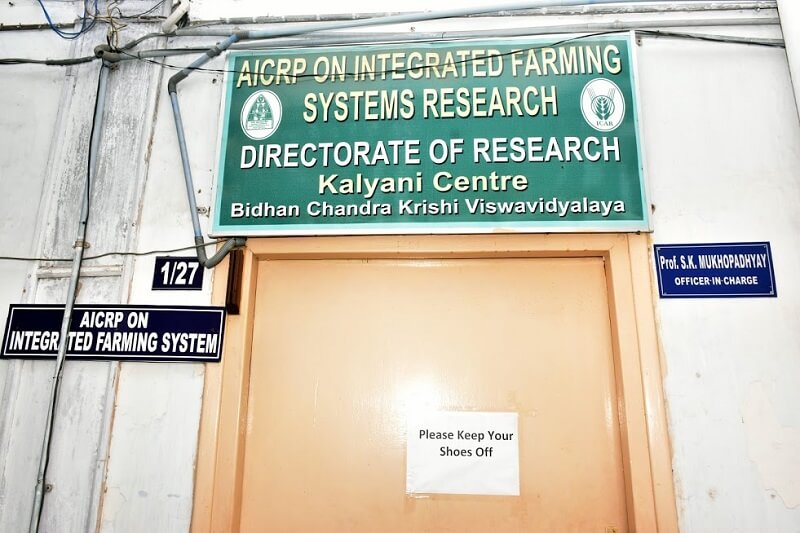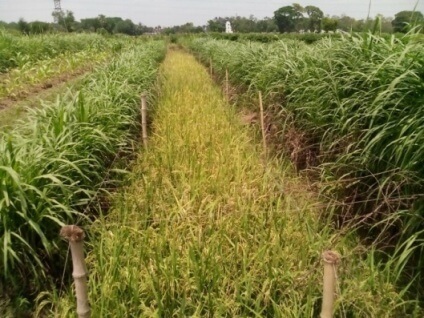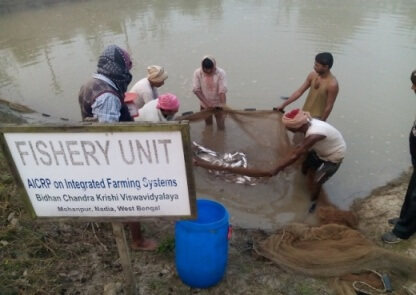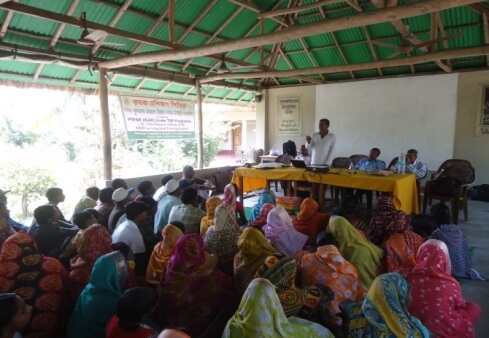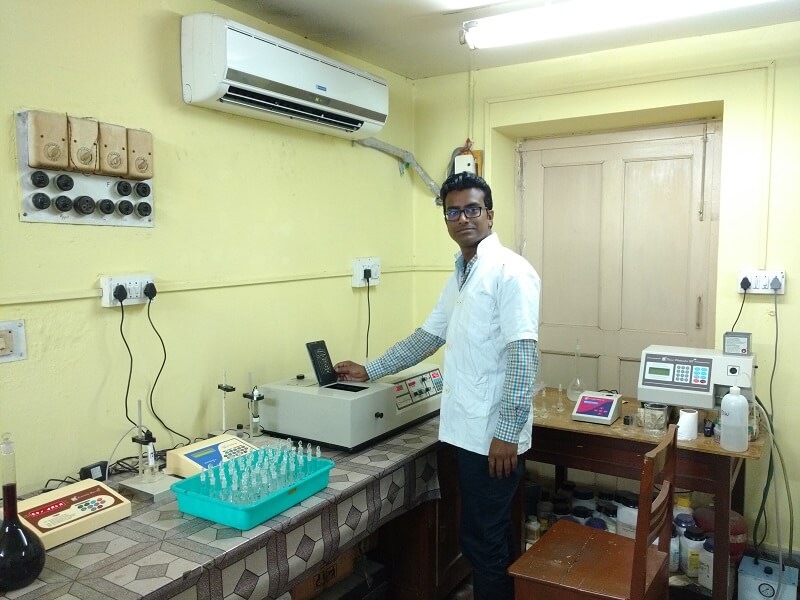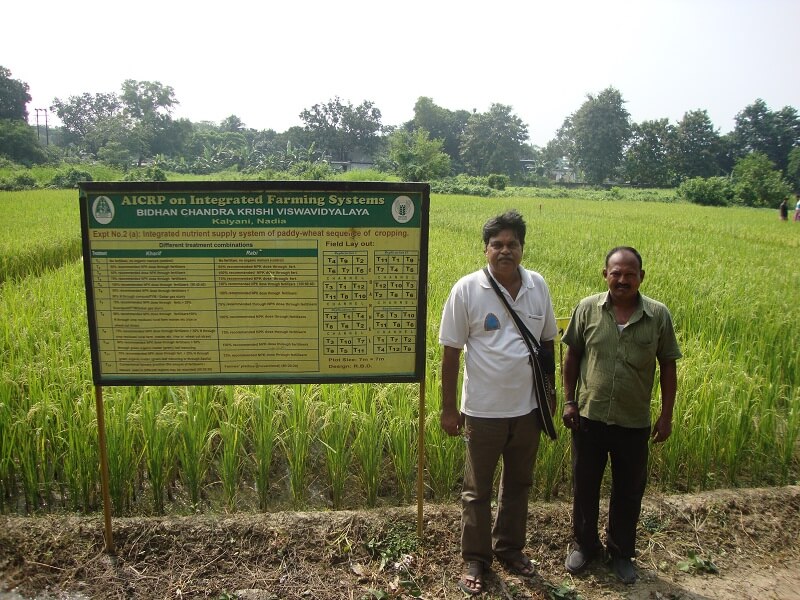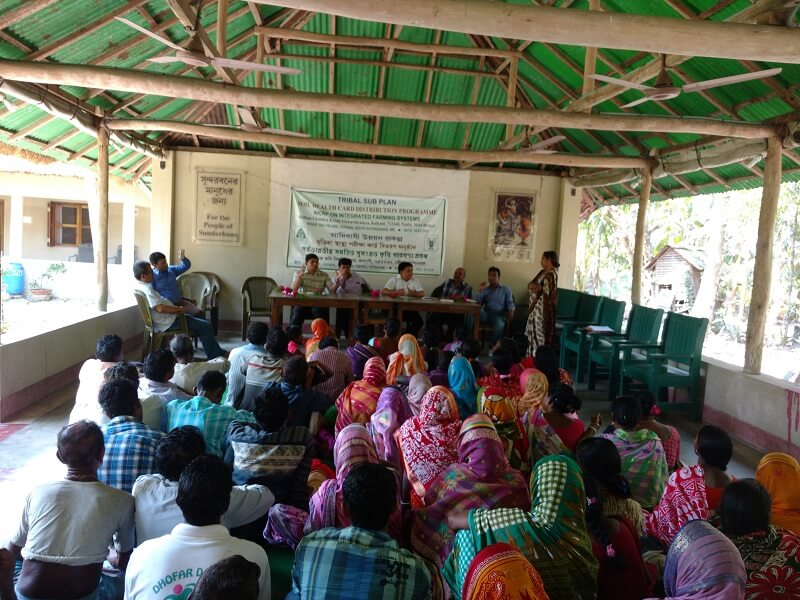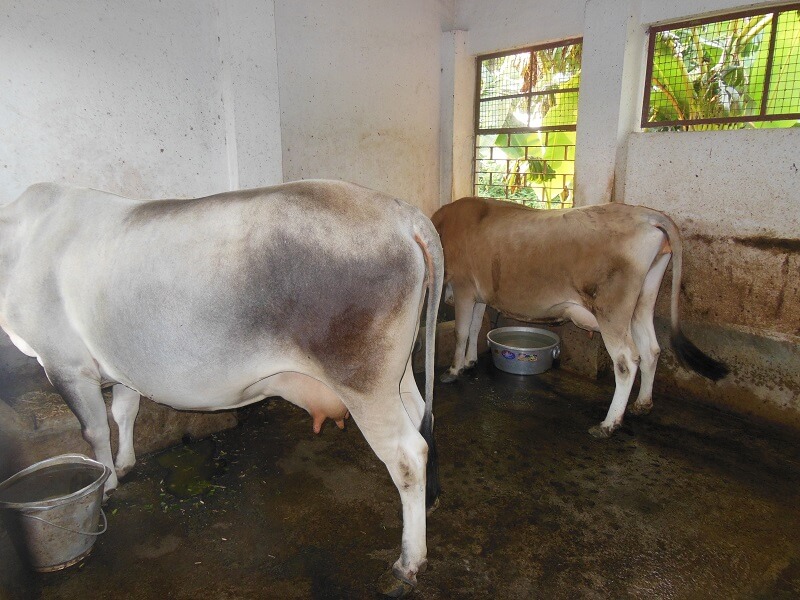AICRP on Integrated Farming System
Small and marginal farmers account for about 96% of all farmers in West bengal. It is a major challenge to improve the livelihood of these small and marginal households. Adoption of integrated farming system with synergistic integration of various farming components is the need of the hour in order to fulfill the basic needs of the households including food (cereal, pulses, oilseeds, milk, fruit, honey, meat, etc.), feed, fodder, fiber, etc. An integrated farming system consists of a range of resource-saving practices that aim to achieve acceptable profits, high sustained levels of production and preserving the environment, while minimizing the negative effects of intensive farming. The integration has to be made in such a way that product of one component should be the input for other enterprises with high degree of complimentary effects on each other, which in turn reduces the cost of cultivation, provides a regular source of income and employment. IFS also reduces the dependence on chemical inputs and thus helps to cope with aberrant climatic conditions and ensures for the establishment of a climate smart agriculture and maintains sustainability on a long term basis. The research of the project (AICRP on IFS) is, therefore, directed towards development of efficient, economically viable and environmentally sustainable farm production technologies for improving productivity and resource use efficiency. On-farm testing, verification and refinement of system-based farm production technologies are also some of the important research activities of the project.
Year of Start/Establishment of the Project:
- 1968-69 ( As All India Coordinated Agronomic Research project at KU)
- 1989-90 (As All India Coordinated Research project on Cropping Systems)
- 2009-10 (All India Coordinated Research project on Integrated Farming Systems)
Staff Strength (Scientific/Technical or Supporting):
| No. of scientific staff | No. of Technical or supporting staff | Post lying vacant | |
|---|---|---|---|
| Scientific | Technical or supporting | ||
| Total -05 | Total-08 (Tech. Asst. 1, Field Asst.4, Driver -1 Contractual -2) |
Total -01 |
Total-04 (Field Asst.-1, Diver-1 ,Contractual - 2) |
Infrastructure Available:
- Cow shed
- Vermicompost unit
- Biogas unit
- A well equipped Laboratory (having equipment like: KEL PLUS Automatic Nitrogen/Protein Estimation System, UV-Vis Spectrophotometer, Autoclave, BOD Incubator, Nephelometric Turbidity Meter, Laminar Air Flow Chamber, Double Distillation Unit etc.)
Mandate/Objectives:
On-station:
- To undertake applied and adaptive research in integrated farming system on production technologies for improving productivity and resource use efficiencies
- To develop efficient, economically viable and environmentally sustainable integrated farming system models for different farming situations
- To undertake human resource development and capacity building in integrated farming system
On-farm Research:
- To undertake characterization of existing farming systems for identification of production constraint and production prioritization
- To undertake on-farm testing and refinement of system-based farm production technologies.
- To optimize on-farm integration of farm enterprises for enhanced farm income, resource use efficiencies and employment opportunities
No. of Trials Allocated/Conducted During 2013-18:
| No. of trials allocated | No. of trials conducted | Reasons for not conducting trials, if any |
|---|---|---|
| On-station-07 On-farm - 03 |
On-station-07 On-farm - 03 |
Not applicable |
Salient findings:
On-Station research
-
An IFS model has been established at Bidhan Chandra Krishi Viswavidyalaya at Central Research Farm, Gayeshpur in 2012 in an area of 0.66 ha to support a family of small and marginal farmer having six family members. The model encompasses components like crop (0.43 ha), horticulture (0.11 ha), dairy, vermicomposting and biogas unit (0.03 ha) and fishery (0.09 ha). Low lying area measuring 0.2 ha has been converted into five pairs of raised and sunken beds alternately.
The Model generated employment of 340 man days (mean data during last four years from 2012-13 to 2015-16). The mean production in terms of REY was recorded to the tune of 14.46 t/ha/year. Livestock unit (7.54 t/ha/year) accounted for 52.14% of the total production followed by crop unit (3.89 t/ha/year) which shared 26.90% of the total production. The Model recorded 42.6, 47.4 and 49% higher net return as compared to the existing farming system of the New Alluvial Zone during 2013-14, 2014-15 and 2015-16, respectively. The model generated 75 kg N, 33 kg P2O5 and 63 kg K2O/year through recycling and vermicomposting. The biogas unit of 2 cubic meter capacity generated biogas equivalent to 250 kg LPG/year.
- A long-term field experiment on rice-wheat cropping sequence was initiated under alluvial zone in 1986 to evaluate the effects of different organic amendments in combination with or without mineral fertilization on (1) yield, yield trends and sustainability of the system, (2) apparent input-output balances of N, P and K and (3) economics of the rice-wheat cropping sequence. After 30 cycles of cropping, it was noted that grain yield of both rice and wheat significantly declined under control and the highest grain yield of rice (4.92 t ha -1) and system REY (8.91 t ha -1) were obtained with 50% RDF + 50% N through green manure (GM) while highest grain yield of wheat (4.16 t ha -1) was recorded with 50% RDF + 50% N through farm yard manure. The highest system gross and net return, B:C ratio and net profitability were observed under 50% RDF + 50% N through GM which was statistically at par with 50% RDF + 50% N through FYM. Treatments integrated with FYM, GM and RS (rice straw) could also maintain the content of soil organic carbon and available N in soil with time and their declining trend was observed in control to 100% RDF treatment.
-
Performance of rice (aromatic)-potato-groundnut cropping sequence was studied for 12 years (20014-16) under different combination of organic treatments.
Application of RDN to all crops from 1/3 each of vermicompost, neemcake and FYM along with intercropping of potato+ Coriander leaf [2:1] and okra+groundnut [3:2] was observed as best organic package. The highest System Rice Equivalent Yield (7340 kg/ha), System Net Return (Rs. 1,80,649/ha) and system B:C ratio (2.18) was recorded in this treatment followed by treatment comprising 100% NPK + ZnSO4.
The lowest B.D. (1.23) and highest OC (13.25 g/kg soil) were noted in 50% RDF + 50% N as FYM (+ Zn SO4 to scented rice) + black polythene mulch to potato and groundnut, and sesbania green manuring in rice for weed management.
- Pointed gourd+ elephant foot yam-pointed gourd + garlic and okra-cauliflower- raddish+ amaranthus- French bean systems were identified as remunerative cropping systems in place of traditionally followed rice-rice system in the new alluvial zone of west Bengal.
On-Farm research
- A field experiment was conducted in Mandirbazar and Kakdwip blocks of South 24 Parganas in 24 farmers’ field to assess the response of nutrients in rice-greengram croppping systems in coastal saline zone of West Bengal and also to estimate the impact of nutrient application levels on deficiency in crop livestock-human food chain continuum. Seven nutrient combinations, viz. control, recommended N alone, NP, NK, NPK, NPK + Zn (in rice only) and farmers’ practice were imposed in the system. Application of 80 kg N, 40 kg P2O5 and 40 kg K2O along with 25 kg ha -1 ZnSO4 produced significantly higher grain (4.51 t ha-1) as well as straw (6.48 t ha -1) yield of rice while 20 kg N, 40 kg P2O5 and 40 kg K2O ha-1 recorded significantly higher seed (0.92 t ha -1) yield in the succeeding greengram. The maximum system rice equivalent yield (8.81 t ha-1) and productivity (24 kg ha -1 day-1) were also achieved under this treatment.
- A farming system experiment was conducted involving 24 marginal farmers of South 24 Parganas under coastal saline zone of West Bengal. Initially there were 9 different types of farming systems and their holding size varied from 0.2-0.8 ha, whereas, net income was in the range of Rs.12, 967/- to Rs. 67, 477/-. During the experimental years, different interventions, namely diversification of cropping systems and improved package of practices in crop component, mineral feeding and vaccination of dairy animal, use of improved poultry birds and quality seeds along with improved management in fishery were introduced to enhance the income of farmers. After three years of experiment mean data revealed that crop+dairy+poultry+fishery+goatery system recorded the maximum net income (Rs.1, 16, 180/-), followed by crop + dairy + fishery + goatery (Rs.1, 07, 827/-) and crop + dairy + poultry + fishery (Rs.1, 06, 180/-).
- The effect of different interventions on yield and economics of 12 small and marginal were evaluated under coastal saline zone of West Bengal. Initially there were 4 different types of farming systems, namely crop + dairy + fishery, crop + fishery, crop + dairy + poultry + fishery and crop+ dairy + fishery and their holding size varied from 0.27-0.93 ha, whereas, net income was in the range of Rs.14, 279/- to Rs. 46, 045/-. During the experimental years, different interventions, namely improved package of practices in crop component, mineral feeding and vaccination of dairy animal, use of improved poultry birds and quality seeds along with improved management in fishery were introduced to enhance the income of farmers. Results of the experiment revealed that crop + dairy + poultry + fishery system recorded the maximum net income (Rs.1, 54,135/-), followed by crop + dairy + fishery (Rs.1,10, 402/-), crop + fishery (Rs. 1,02, 401/-) and crop + dairy + poultry (Rs. 96, 767/-).
TSP Programme at Bali Island:
Altogether 19 types of farming systems were identified in 120 farm households and the maximum gross return (21816/-) was recorded from Crop+Dairy+Poultry+Goatery system in bench mark. After intervention, enhancement of return both from individual crop and livestock were noticed. Among the crops rice, summer rice, potato, sunflower, grass pea and vegetables recorded enhancement of return amounting to Rs. 936/-, Rs. 461/-, Rs. 3057/-, Rs. 1725/-, Rs. 1908/- and Rs. 1225/-, respectively over the benchmark. Whereas in dairy, poultry, duckery, goatery, sheep and fishery the income enhancement was to the tune of Rs. 2551/-, Rs. 215/-, Rs. 657/-, Rs. 3881/-, Rs. 2350/- and Rs. 6650/-, respectively.
Achievements:
The project has developed a raised bed sunken bed model for low lying areas in the lower Gangetic plains of West Bengal where there is problem of rice cultivation because of water stagnation in rainy season. The raised bed can be utilized for vegetable cultivation throughout the year while the sunken beds ensure rice and fish cultivation in rainy season. Slope in the junction of raised and sunken beds can be utilized for fodder cultivation and some vegetable creepers (dolichos bean, bottle gourd etc.) may be grown above the sunken beds on netted scaffolds.

